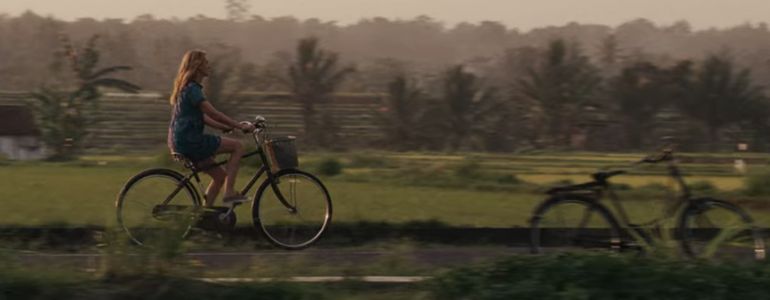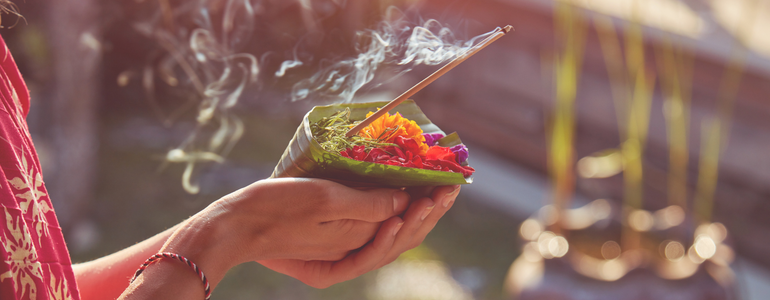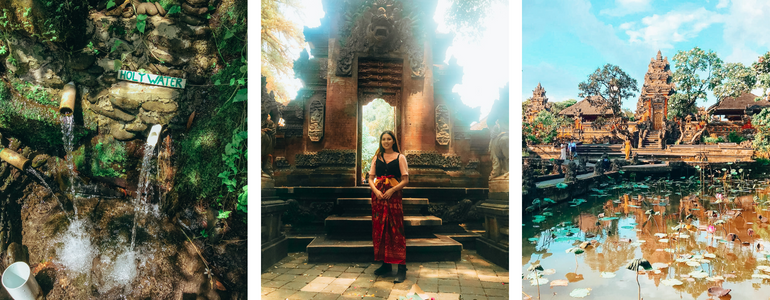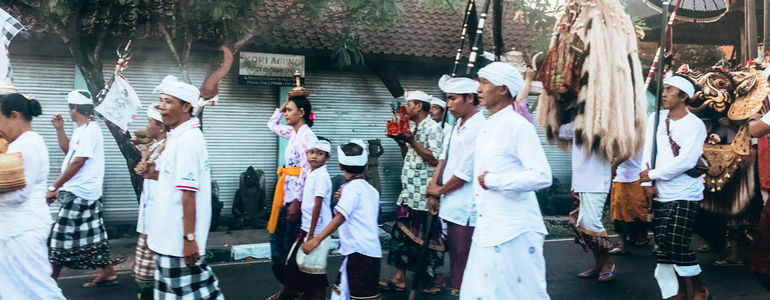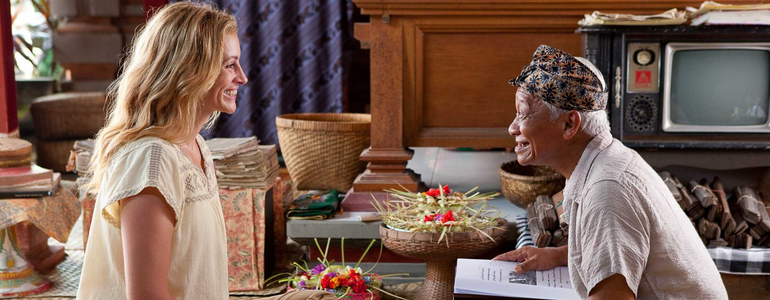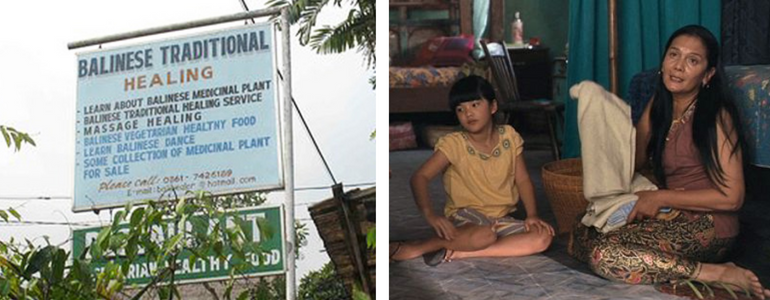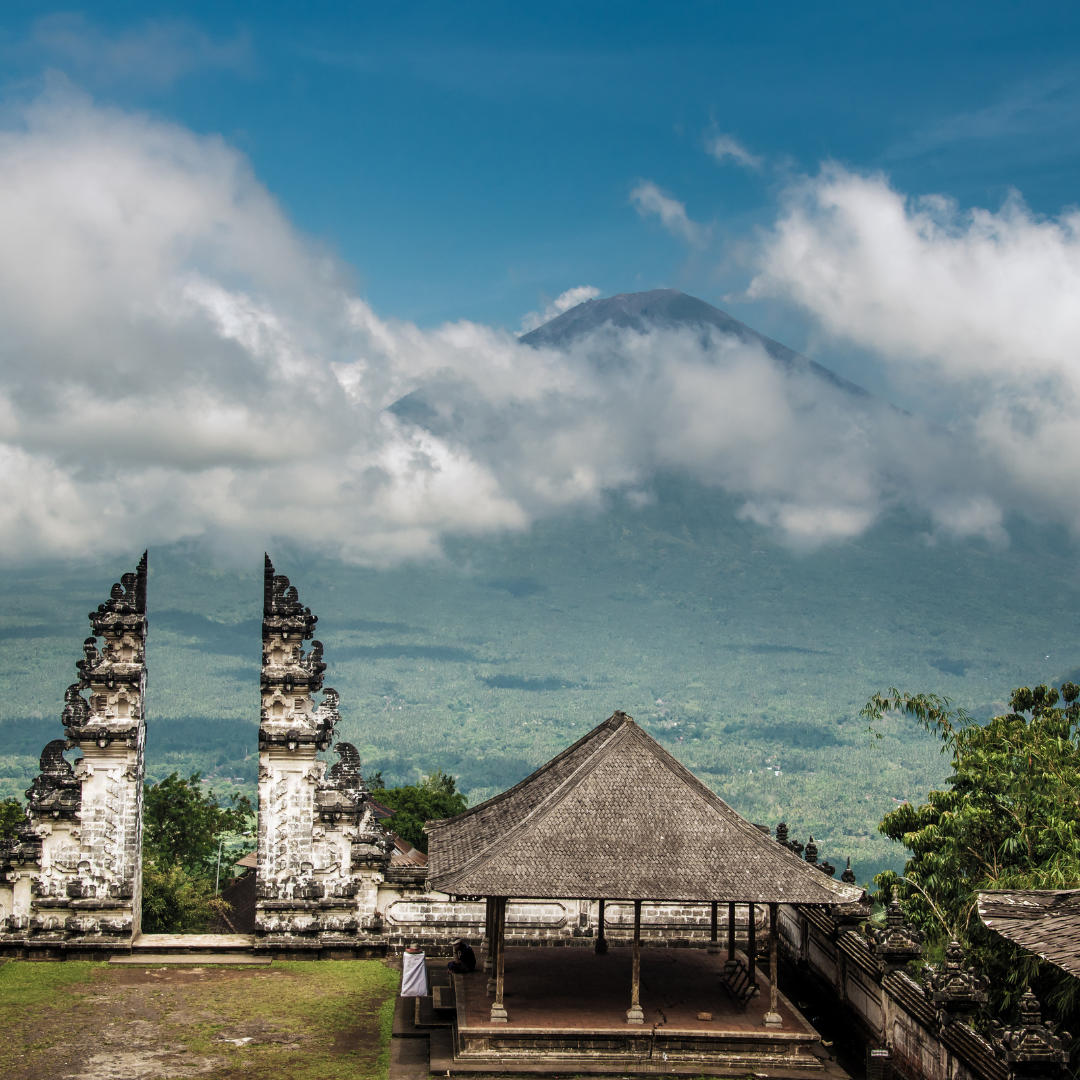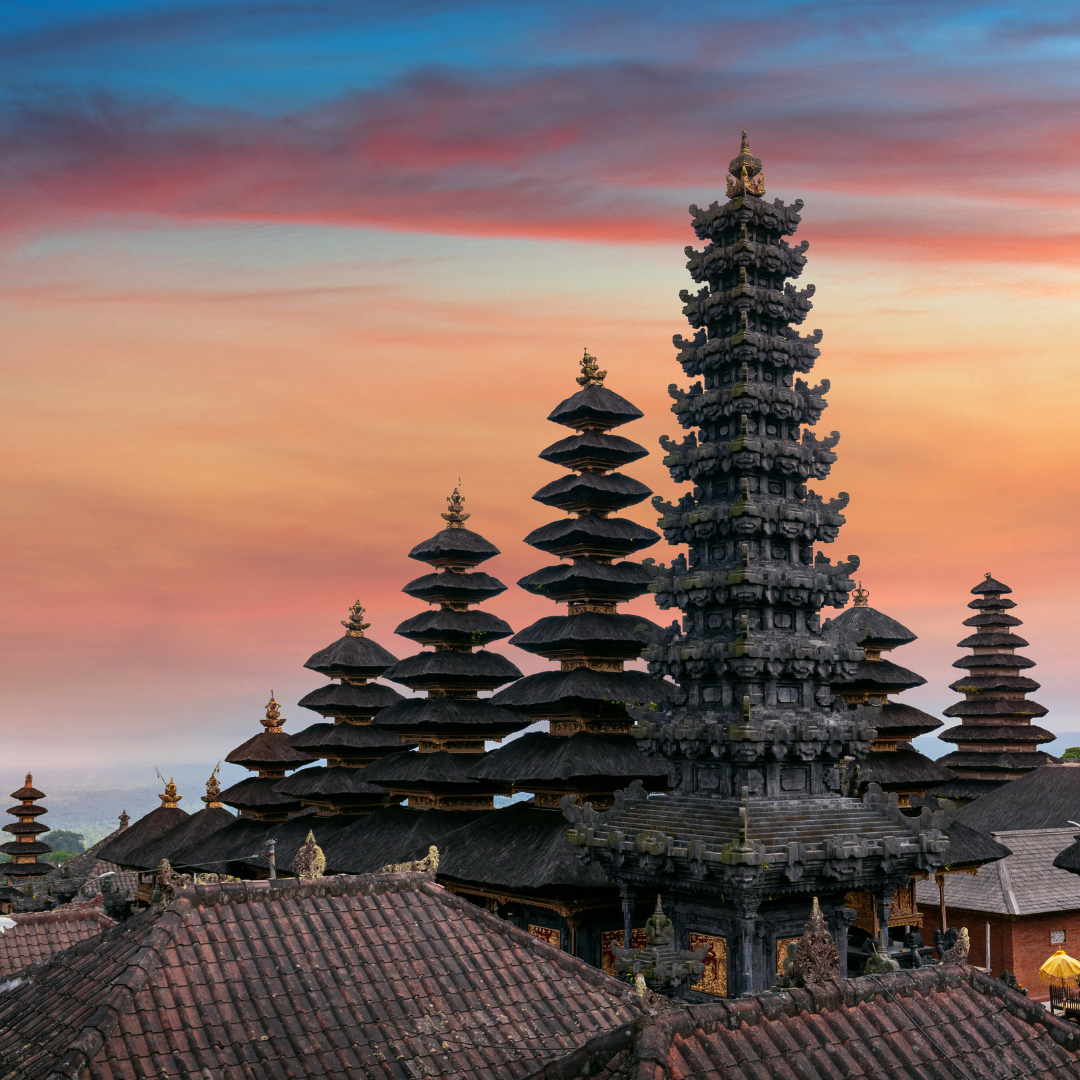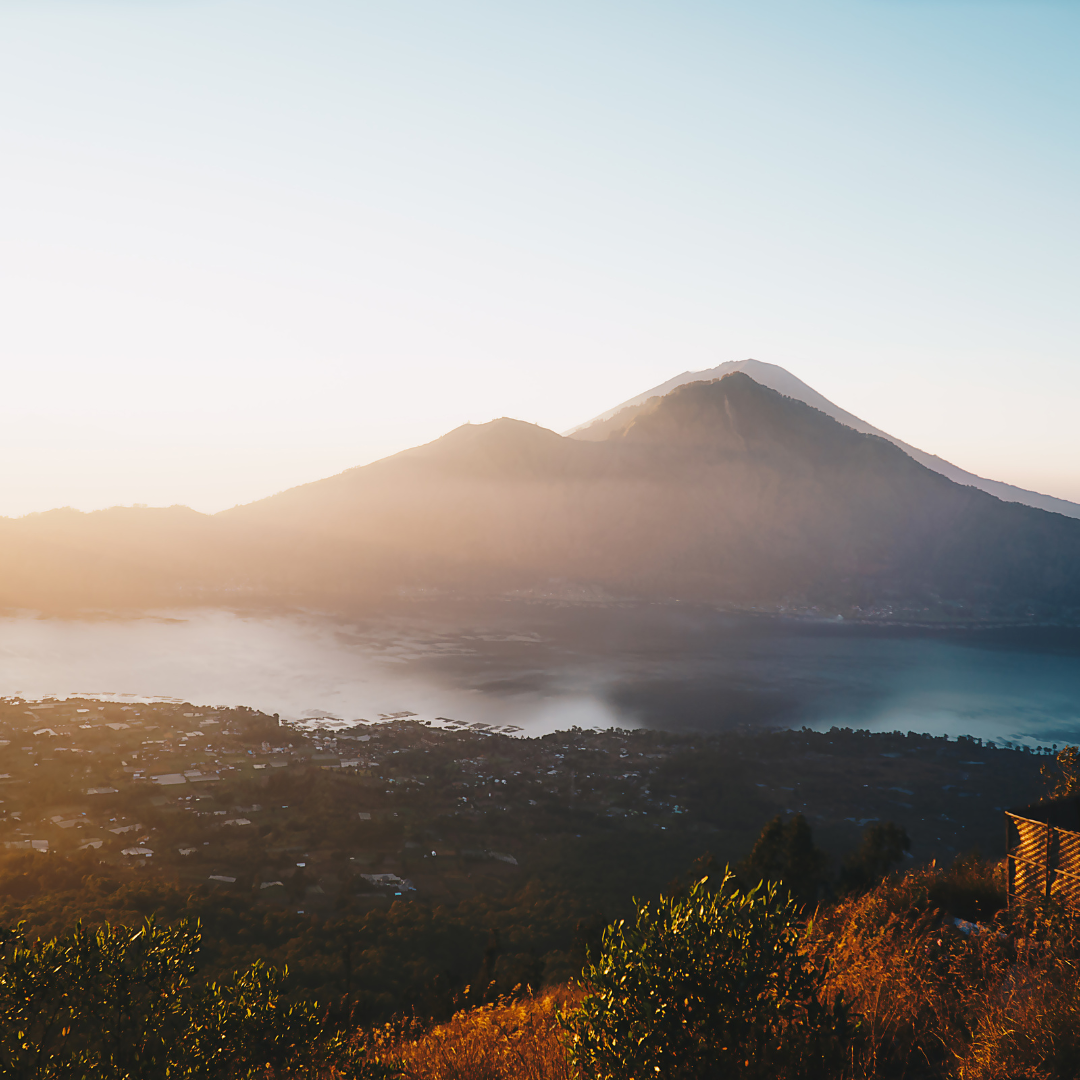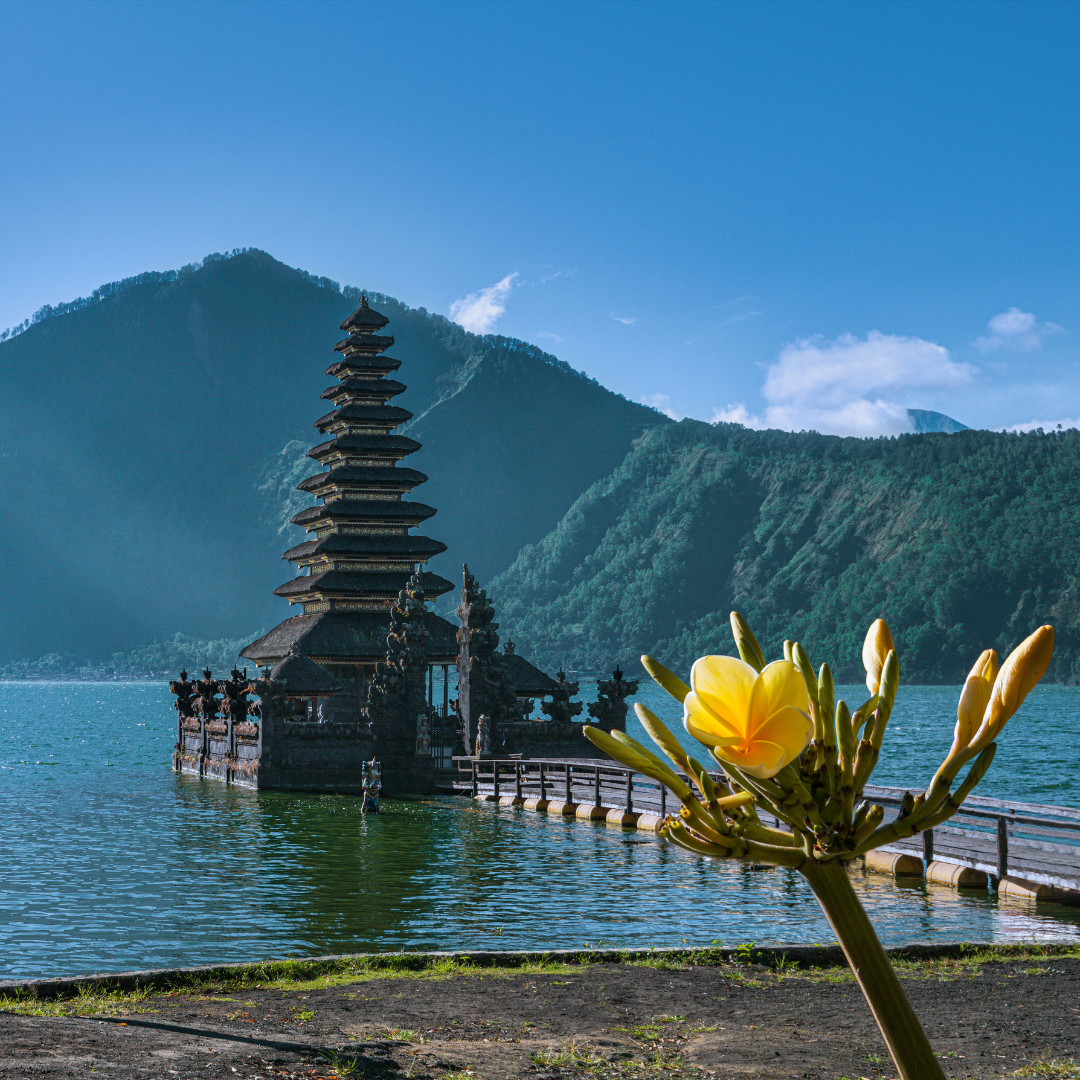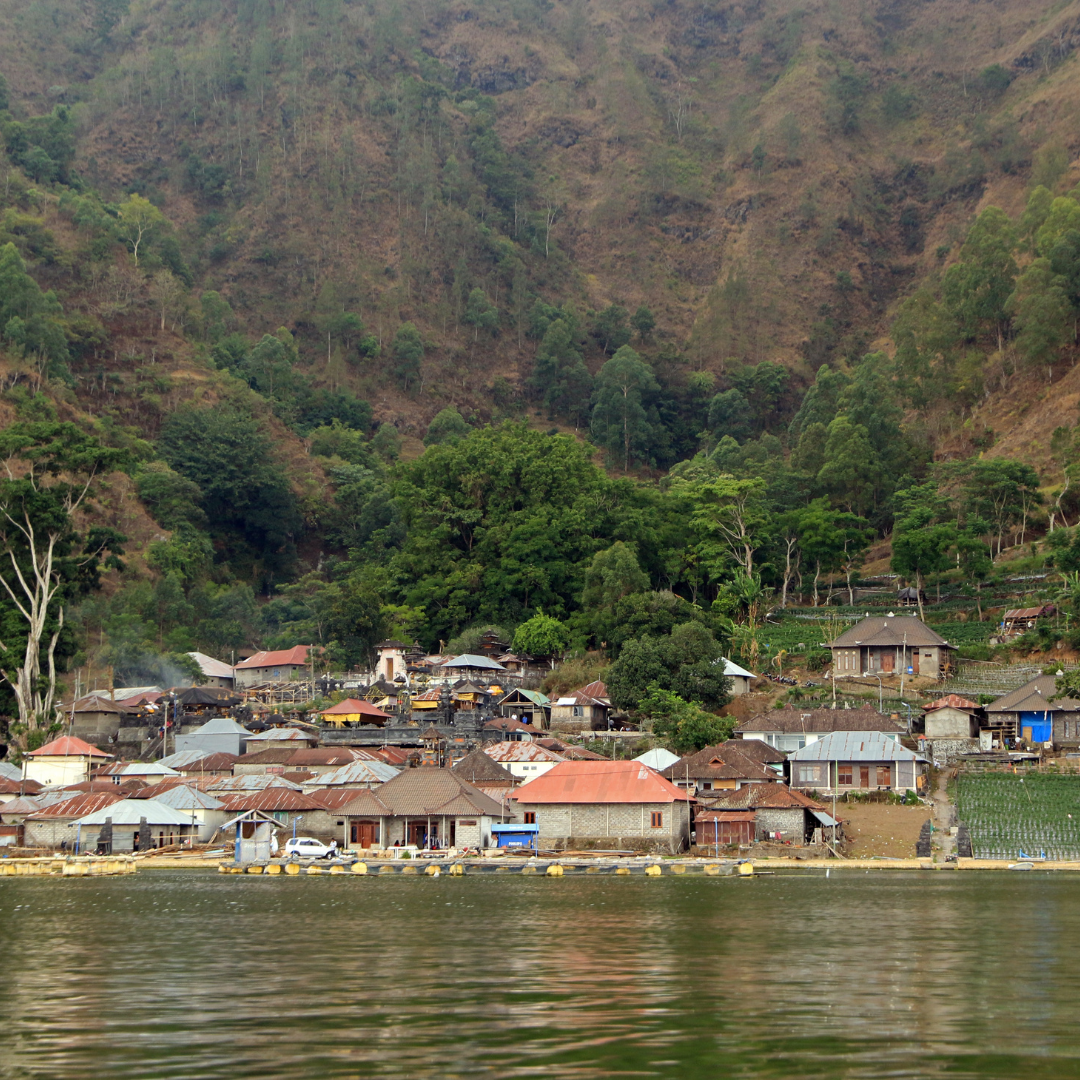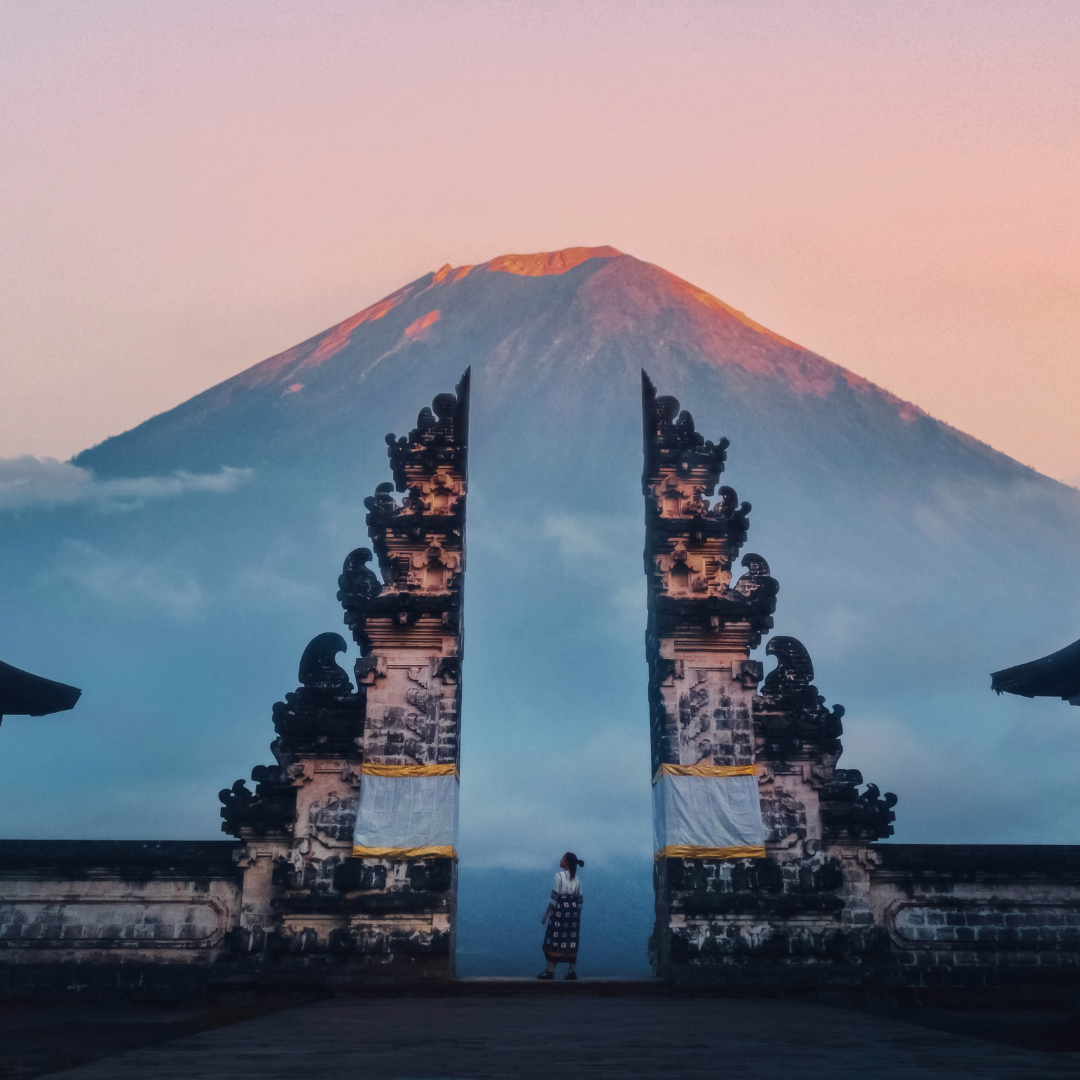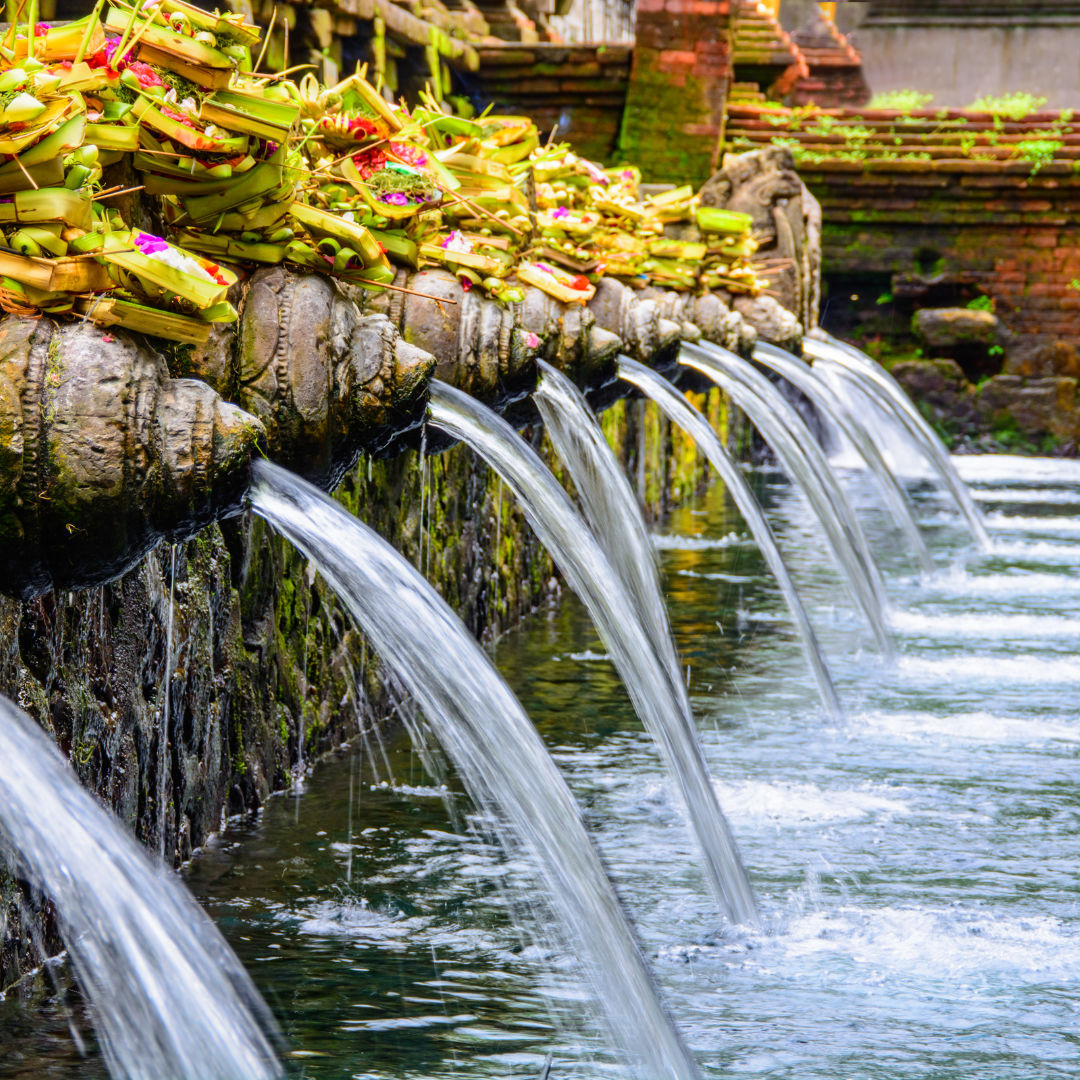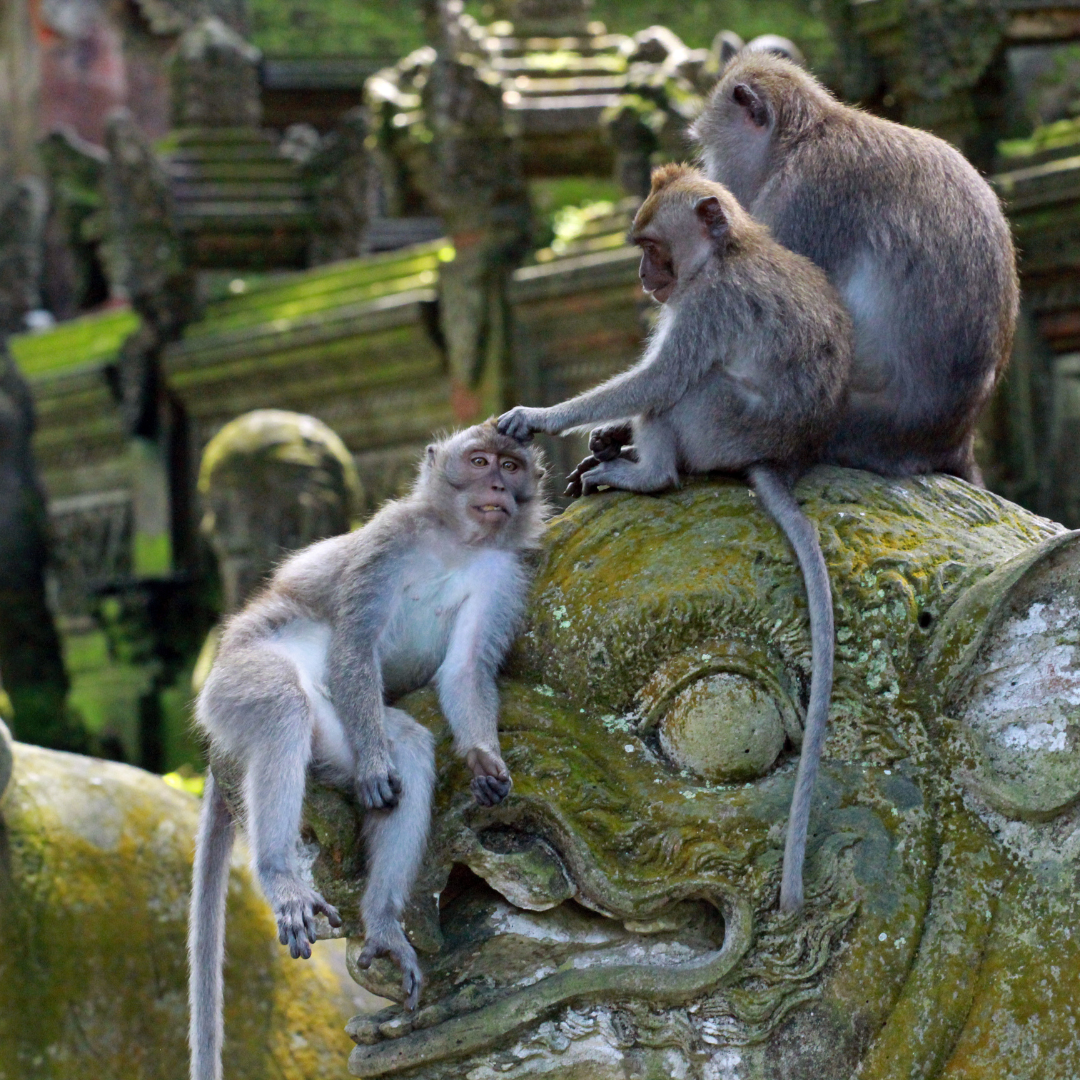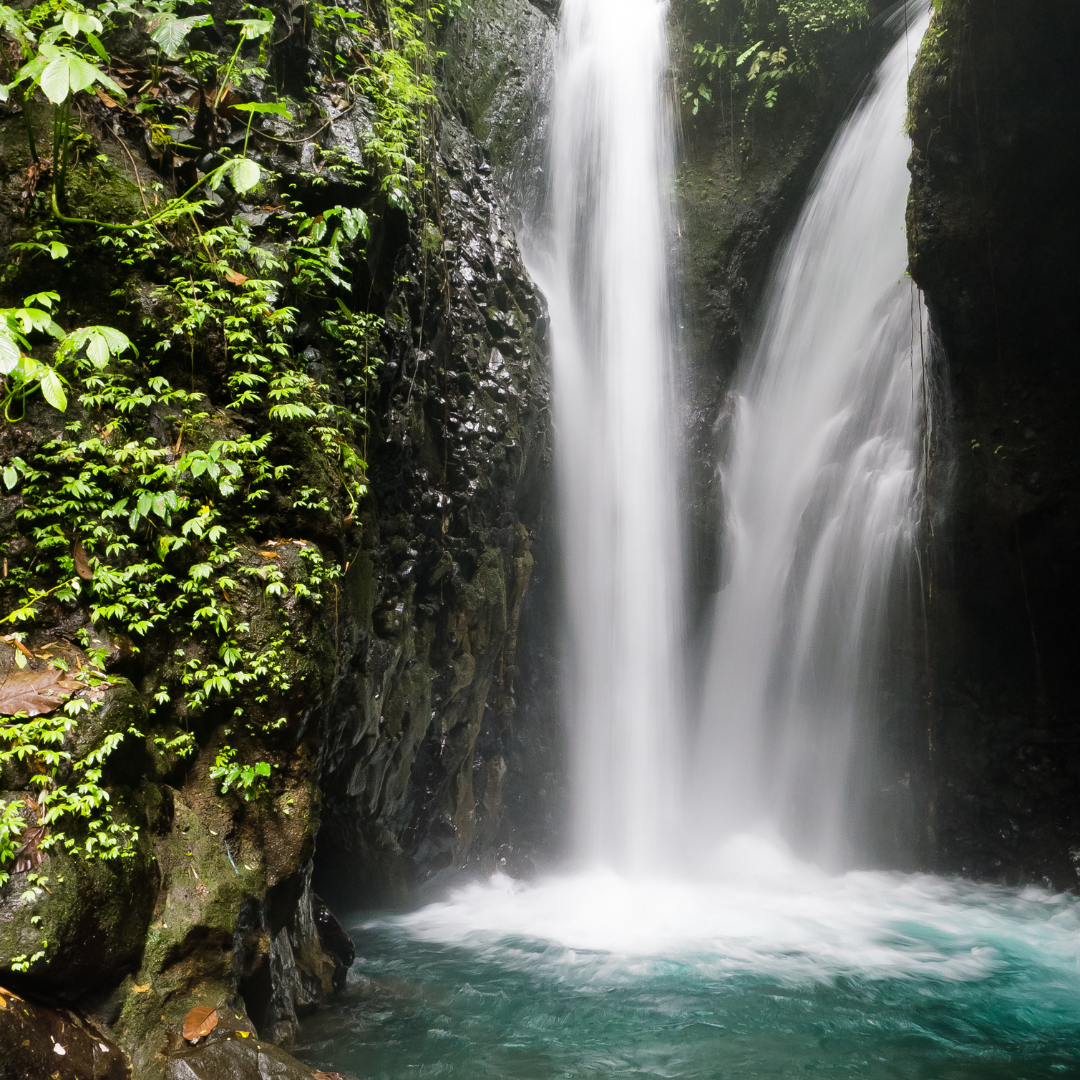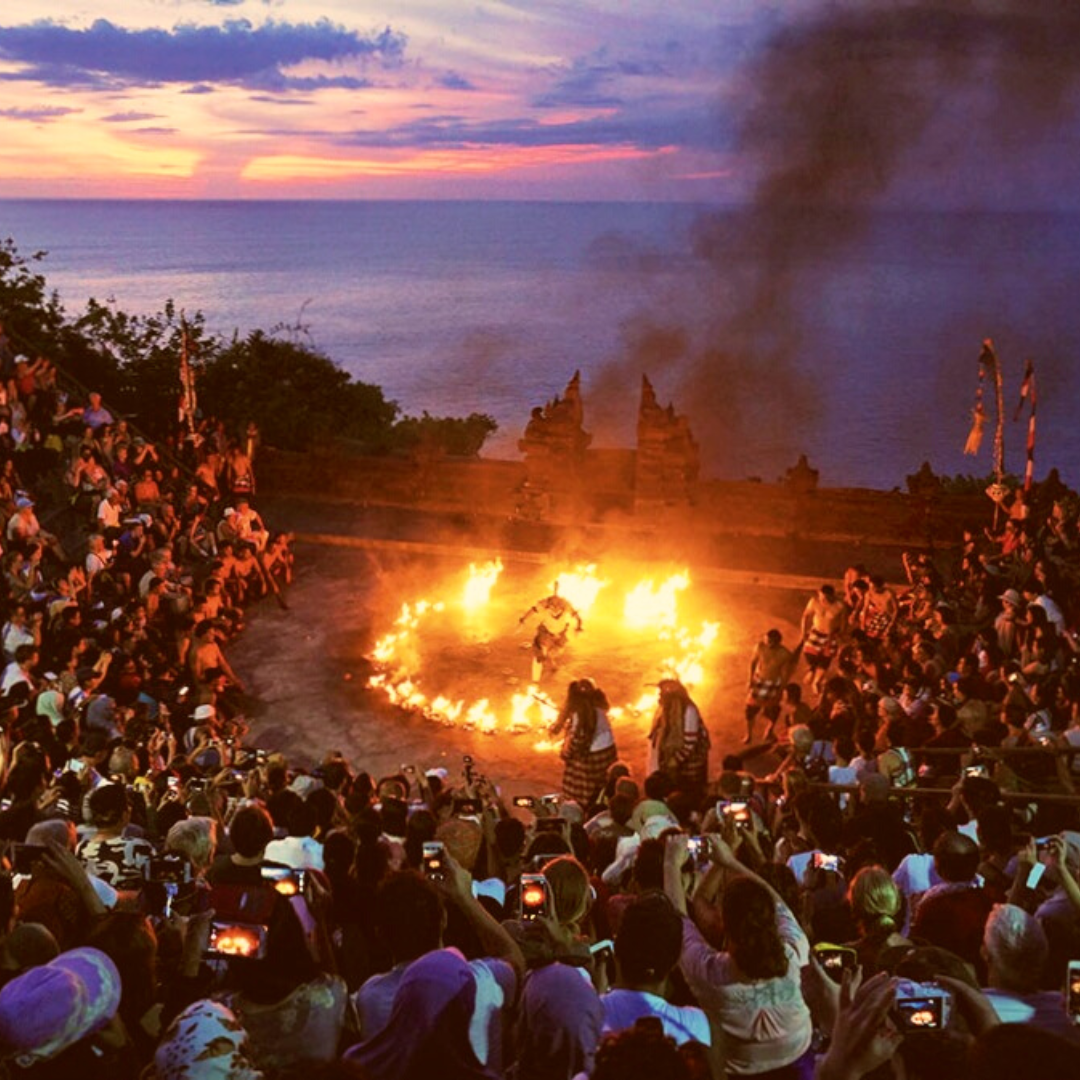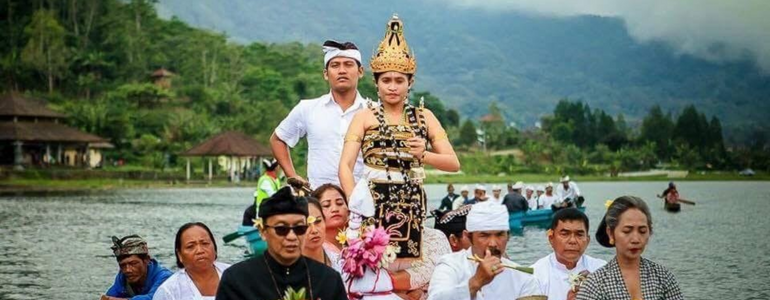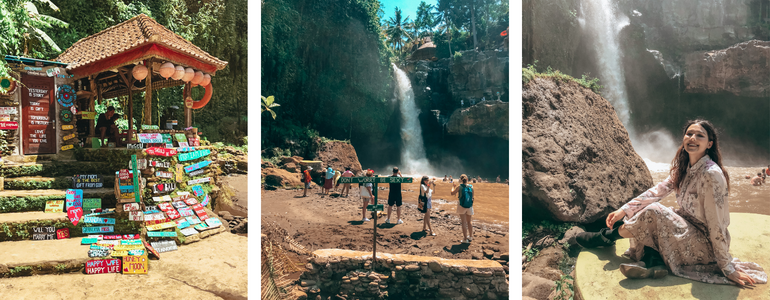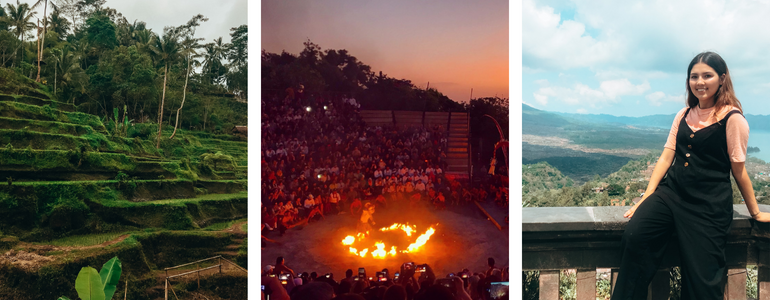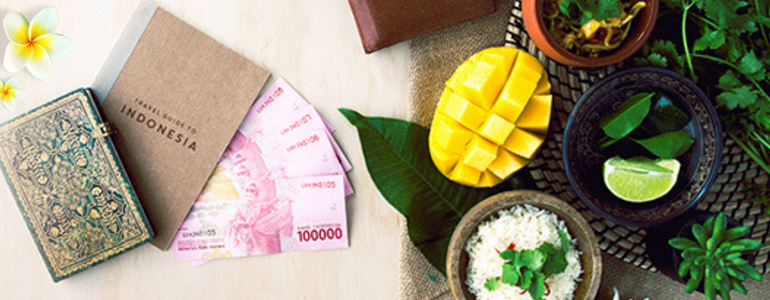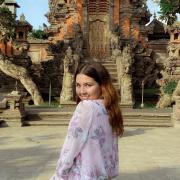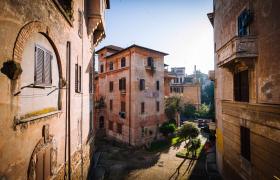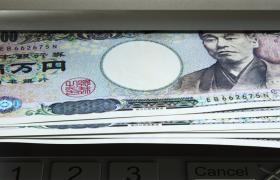Left: Google Images of Wayan's real-life clinic. Right: Film still of Balian healer Wayan and daughter Tutti from Eat Pray Love.
Traditional healers in Bali are known as Balians.
There are about 8,000 Balians practising in Bali today, (almost quadruple the figure of doctors), and they are at the forefront of community health; healing everything from broken bones to broken hearts.
Often, Balians are the first port of call before visiting a conventional doctor, however the two disciplines are linked – Balians may refer clients to doctors, pharmacies or the hospital, and likewise, when mainstream medical treatment isn’t effective, doctors might discreetly suggest a patient see a Balian.
Balians are called to heal others, either by ancestral lineage passing down generations of knowledge, or through wahyu - divine inspiration – which may happen with near-death experiences. Balians study ancient scriptures known as lontar – books filled with knowledge of Usada (healing), carved onto the lontar palm leaves with a knife – to attain a vast knowledge of esoteric matters, traditional herbs, anatomy, tantras, yoga, mantras, meditations, and more.
Types of Balians
Balian Usada – Balians who help heal the sick. They usually have many lontars describing natural medicines and therapies, typically growing their own medicinal herbs too, so they can create potions known as Loloh (herbal leaves crushed and mixed with water, which is ingested), or Baboreh (a paste made of ground herbs and roots applied topically).
Balian Paica – Similar to a Balian Usada, but rather than natural remedies, these healers use sacred family relics, perform rituals, and chant mantras and prayers.
Balian Tulang – Tulang is Balinese for bone, and as such, you can expect bone healing and repair from a Balian Tulang.
Balian Apun or Urat – healers specialising in internal organ issues and blood flow.
Balian Manak – Manak means to give birth, and Balian Manak act as a midwife. They are especially important in remote communities far from hospitals and clinics.
Balian Taksu and Ketakson – Balians who are mediums. The Balian Taksu creates medicine with holy water, flowers and plants while drawing power from nature and spirits, while the Balian Ketakson is a medium who communicates spirits to seek insight into illnesses and healing. They can also use trance to invoke spirits into their body to commune with passed loved ones as well as to heal.
Balian Kebal – These Balians specialise in providing magical charms, amulets, talismans, or spells to protect against Black Magic hexes, curses, and spiritual attacks.
Balian Tenung – These practitioners are gifted in prophesy, reading the future. They are often clairvoyant, and are said to also help locate lost objects or reveal crimes.
Balian Terang – Balians who can influence the weather, in particular rain, to make sure events stay dry and sunny (which is important when Bali has so many celebrations!).
What does a healing look like?
Balian healing is very holistic, so the healer will use a range of techniques to decipher the cause and treatment of your ailment.
Depending on their modality and speciality, they may read your palm, your aura, study your name, or poke and prod different pressure points around your body.
They might use trance and meditation to see what significant life events (be it this life or a past one) or traumas may contribute to your affliction. They might also warn you of future events.
Balians most likely won’t sugarcoat any less-desirable findings, nor the medicines (for example, loloh) which can have a very bitter herbal taste, so it can be a “difficult pill to swallow,” so to speak.
The Balian may use magic, use mudras, apply scented oils, poke you with sharp sticks or use deep tissue massage - which can be quite painful (not the luxurious massage you might be used to) according to a handful of anecdotes, but they all said the pain gave way to greater healing.
You should also know that the treatments are performed publicly, with other waiting clients watching intently.
Should you see a Balian?
Eat Pray Love brought Balinese healing to the main stage.
The late Ubud Balian and priest, Pak Ketut Liyer, was brought to fame by Elizabeth Gilbert’s book and subsequent movie, and his home became a tourist destination.
However, a visit to the Balian shouldn’t be just a box to check on your itinerary.
Balians are committed to their community as an instrument of divine healing, and cannot turn anyone away.
There are genuinely ill people needing attending to, so if your desire to visit a Balian is more curiosity than healing based, consider joining a tour and making an appointment rather than just showing up.
However, if you are in need of some deep healing, then you can ask the locals!
To find a Balian or Healer
It’s very much word of mouth. You’ll want to talk to the locals, like your hotel staff, about what you’re looking for, and they will be able to help you find the right Balian for you.
They might also be able to make the appointment and supply the offering. You’ll also want to take a translator with you, as many Balians don’t speak English.
You can also ask for local tours that specialise in Balinese healing!
For example this Healing Arts Tour by Pak Made Surya, an authority studying Balinese healing for 15+ years. Surya has worked with National Geographic and published several works on the subject.
Seeking Ketut and Wayan from Eat Pray Love?
Wayan still has her clinic in Ubud which you can visit for a healing session!
You can find her Traditional Balinese Healing Centre here.
Ketut passed away in 2016, however you can still visit is house and see his son, who is also a medicine man.

